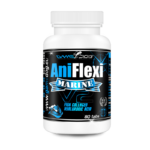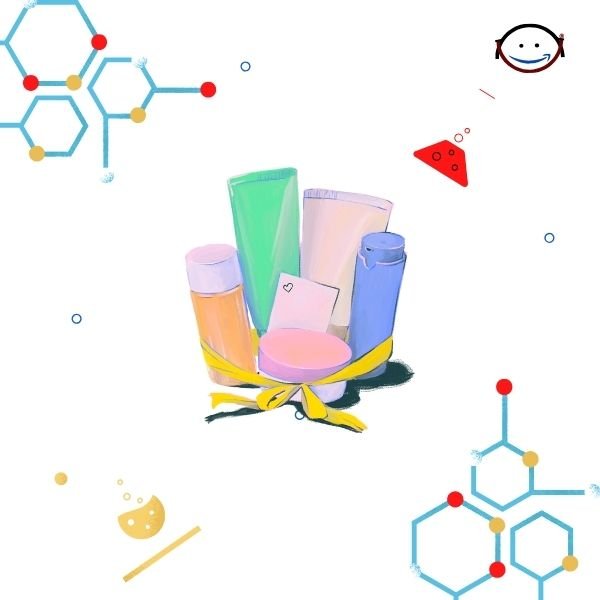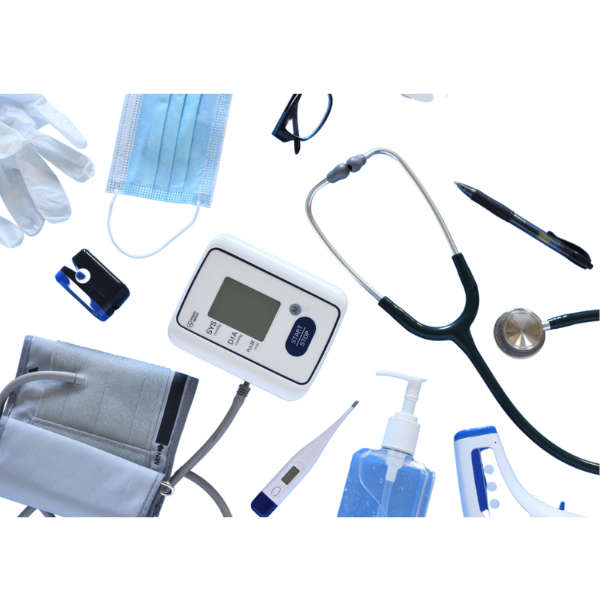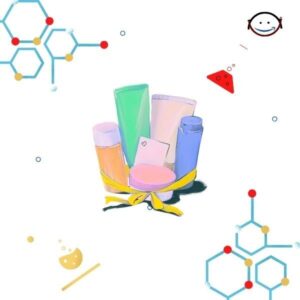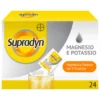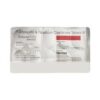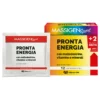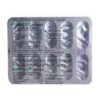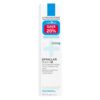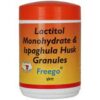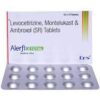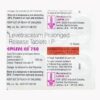-
Supradyn? Magnesium And Potassium Bayer 24 Sachets ₦17,480.00 QTY: 1
-
DAPAJUST 10MG STRIP OF 10 TABLETS ₦4,042.50 QTY: 1
-
PRESSCLAV 625MG STRIP OF 10 TABLETS ₦4,617.00 QTY: 1
-
RANOZINE 500 SR Tablet 10?s ₦27,200.00 QTY: 1
-
Sport Ready Energy Massigen Sport 12 Sachets ₦9,842.00 QTY: 2
-
CVP CAP 10`S ₦1,959.50 QTY: 2
-
La Roche-Posay Effaclar Duo+M Save 20% 40ml ₦32,071.12 QTY: 1
-
FREEGO BOTTLE OF 150GM GRANULES ₦7,841.75 QTY: 1
-
ALERFIX TOTAL TAB 15`S ₦5,397.50 QTY: 1
-
EPILIVE ER 750MG STRIP OF 10 TABLETS ₦2,632.75 QTY: 1
-
Sebamed Clear Face Care Gel, 50ml ₦31,500.00 QTY: 2
-
CYCLOTAG 50mg Capsule 10?s ₦52,700.00 QTY: 1
Customer matched zone "Lagos Delivery Options"
Sort by:
129–144 of 4627 Results
-
SaleAmlopin 5 mgAmlopin 5 mg is a calcium channel blocker and may be used alone or in combination with other antihypertensive and antianginal agents for the treatment of Hypertension and Coronary Artery Disease (such as Chronic Stable Angina, Vasospastic Angina and Angiographically Documented Coronary Artery Disease in patients without heart failure or an ejection fraction 1.0% are headache, fatigue, nausea, abdominal pain and somnolence.Pregnancy & LactationPregnancy Category C. There are no adequate and well-controlled studies of Amlopin 5 mg in pregnant women. Amlopin 5 mg should be used during pregnancy only if the potential benefit justifies the potential risk to the fetus. It is not known whether Amlopin 5 mg is excreted in human milk. In the absence of this information, it is recommended that nursing be discontinued while Amlopin 5 mg is administered.Precautions & WarningsSymptomatic hypotension is possible, particularly in patients with severe aortic stenosis. However, because of the gradual onset of action, acute hypotension is unlikely. Worsening angina and acute myocardial infarction can develop after starting or increasing the dose of Amlopin 5 mg, particularly in patients with severe obstructive coronary artery disease. Titrate slowly when administering calcium channel blockers to patients with severe hepatic impairment.Overdose Effects of Amlopin 5 mgIn humans, experience with intentional overdose is limited.Symptoms: Available data suggest that large overdosage could result in excessive peripheral vasodilatation and possibly reflex tachycardia. Marked and probably prolonged systemic hypotension up to and including shock with fatal outcome have been reported.Management: Clinically significant hypotension due to Amlopin 5 mg overdosage calls for active cardiovascular support including frequent monitoring of cardiac and respiratory function, elevation of extremities, and attention to circulating fluid volume and urine output.?A vasoconstrictor may be helpful in restoring vascular tone and blood pressure, provided that there is no contraindication to its use. Intravenous calcium gluconate may be beneficial in reversing the effects of calcium channel blockade. Gastric lavage may be worthwhile in some cases. In healthy volunteers the use of charcoal up to 2 hours after administration of Amlopin 5 mg 10 mg has been shown to reduce the absorption rate of Amlopin 5 mg. Since Amlopin 5 mg is highly protein-bound, dialysis is not likely to be of benefit.Storage Conditionskeep in a dry place away from light and heat. Keep out of the reach of children.Use In Special PopulationsChildren with hypertension from 6 years to 17 years of age: 2.5 mg once daily as a starting dose, up-titrated to 5 mg once daily if blood pressure goal is not achieved after 4 weeks. Doses in excess of 5 mg daily have not been studied in pediatric patients.Children under 6 years old: ?The effect of Amlopin 5 mg on blood pressure in patients less than 6 years of age is not known.Elderly: Amlopin 5 mg used at similar doses in elderly or younger patients is equally well tolerated. Normal dosage regimens are recommended in the elderly, but increase of the dosage should take place with care.Renal impairment: Changes in Amlopin 5 mg plasma concentrations are not correlated with degree of renal impairment, therefore the normal dosage is recommended. Amlopin 5 mg is not dialysable.Hepatic impairment: Dosage recommendations have not been established in patients with mild to moderate hepatic impairment; therefore dose selection should be cautions and should start at the lower end of the dosing range. The pharmacokinetics of Amlopin 5 mg have not been studied in severe hepatic impairment. Amlopin 5 mg should be initiated at the lowest dose (2.5 mg once daily) and titrated slowly in patients with severe hepatic impairment.Sku: 1736107016-4320
Amlopin5 mg
₦2,755.50Original price was: ₦2,755.50.₦2,479.95Current price is: ₦2,479.95.₦2,755.50Original price was: ₦2,755.50.₦2,479.95Current price is: ₦2,479.95. Add to basket Quick View -
SaleAmlosartan 10 mg+160 mgAmlodipine and Valsartan combination is indicated for the treatment of hypertension. This fixed combination drug is not indicated for the initial therapy of hypertension.Theropeutic ClassCombined antihypertensive preparationsPharmacologyAmlodipine is a dihydropyridine calcium channel blocker that inhibits the transmembrane influx of calcium ions into vascular smooth muscle and cardiac muscle. Valsartan blocks the vasoconstrictor and aldosterone-secreting effects of Angiotensin II by selectively blocking the binding of Angiotensin II to the AT1 receptor in many tissues, such as vascular smooth muscle and the adrenal gland. Its action is therefore independent of the pathways for Angiotensin II synthesis. Amlodipine and Valsartan have been shown to be effective in lowering blood pressure. Both Amlodipine and Valsartan lower blood pressure by reducing peripheral resistance, but calcium influx blockade and reduction of Angiotensin II vasoconstriction are complementary mechanisms.Dosage & Administration of Amlosartan 10 mg+160 mgTreatment of hypertension: Amlodipine is an effective treatment of hypertension in once daily doses of 2.5 mg - 10 mg while Valsartan is effective in doses of 80 mg-320 mg. In clinical trials with Amlodipine and Valsartan, using amlodipine doses of 5 mg-10 mg and Valsartan doses of 160 mg-320 mg, the antihypertensive effects increased with increasing doses. The majority of the antihypertensive effect is attained within 2 weeks after initiation of therapy or a change in dose. The dosage can be increased after 1 to 2 weeks of therapy to a maximum of 10/320 mg once daily as needed to control blood pressure. This combination may be administered with or without food. This combination may be administered with other antihypertensive agents. A patient whose blood pressure is not adequately controlled with Amlodipine alone or with Valsartan alone may be switched to this combination therapy.Elderly patients: Because of decreased clearance of Amlodipine, therapy should usually be initiated at 2.5 mg.Renal Impairment: No initial dosage adjustment is required for patients with mild or moderate renal impairment. Titrate slowly in patients with severe renal impairment.Hepatic Impairment: No initial dosage adjustment is required for patients with mild or moderate liver insufficiency. Titrate slowly in patients with hepatic impairment.Interaction of Amlosartan 10 mg+160 mgNo drug interaction studies have been conducted with Amlodipine and Valsartan combination, although studies have been conducted with the individual components.ContraindicationsThis combination product is contraindicated in patients who are hypersensitive to any components of this product.Side Effects of Amlosartan 10 mg+160 mgGenerally been mild and transient in nature. The most common side effects include peripheral edema, nasal congestion, sore throat and discomfort when swallowing, upper respiratory tract infection, dizziness etc.Pregnancy & LactationPregnancy Category D. It is not known whether Amlodipine or Valsartan is excreted in human milk. Because of the potential for adverse effects on the nursing infant, a decision should be made whether to discontinue nursing or discontinue the drug, taking into account the importance of the drug to the mother.Precautions & WarningsAvoid fetal or neonatal exposure, assess for hypotension, warn patients with severe obstructive coronary artery disease about the risk of myocardial infarction or increased angina, titrate slowly in patients with impaired hepatic or severely impaired renal function.Storage ConditionsKeep below 30?C temperature, away from light & moisture. Keep out of the reach of children.Use In Special PopulationsSafety and effectiveness in paediatric patients have not been established.Sku: 1736099846-2207
Amlosartan10 mg+160 mg
₦4,950.00Original price was: ₦4,950.00.₦4,455.00Current price is: ₦4,455.00.₦4,950.00Original price was: ₦4,950.00.₦4,455.00Current price is: ₦4,455.00. Add to basket Quick View -
SaleAmlosartan 5 mg+160 mgAmlodipine and Valsartan combination is indicated for the treatment of hypertension. This fixed combination drug is not indicated for the initial therapy of hypertension.Theropeutic ClassCombined antihypertensive preparationsPharmacologyAmlodipine is a dihydropyridine calcium channel blocker that inhibits the transmembrane influx of calcium ions into vascular smooth muscle and cardiac muscle. Valsartan blocks the vasoconstrictor and aldosterone-secreting effects of Angiotensin II by selectively blocking the binding of Angiotensin II to the AT1 receptor in many tissues, such as vascular smooth muscle and the adrenal gland. Its action is therefore independent of the pathways for Angiotensin II synthesis. Amlodipine and Valsartan have been shown to be effective in lowering blood pressure. Both Amlodipine and Valsartan lower blood pressure by reducing peripheral resistance, but calcium influx blockade and reduction of Angiotensin II vasoconstriction are complementary mechanisms.Dosage & Administration of Amlosartan 5 mg+160 mgTreatment of hypertension: Amlodipine is an effective treatment of hypertension in once daily doses of 2.5 mg - 10 mg while Valsartan is effective in doses of 80 mg-320 mg. In clinical trials with Amlodipine and Valsartan, using amlodipine doses of 5 mg-10 mg and Valsartan doses of 160 mg-320 mg, the antihypertensive effects increased with increasing doses. The majority of the antihypertensive effect is attained within 2 weeks after initiation of therapy or a change in dose. The dosage can be increased after 1 to 2 weeks of therapy to a maximum of 10/320 mg once daily as needed to control blood pressure. This combination may be administered with or without food. This combination may be administered with other antihypertensive agents. A patient whose blood pressure is not adequately controlled with Amlodipine alone or with Valsartan alone may be switched to this combination therapy.Elderly patients: Because of decreased clearance of Amlodipine, therapy should usually be initiated at 2.5 mg.Renal Impairment: No initial dosage adjustment is required for patients with mild or moderate renal impairment. Titrate slowly in patients with severe renal impairment.Hepatic Impairment: No initial dosage adjustment is required for patients with mild or moderate liver insufficiency. Titrate slowly in patients with hepatic impairment.Interaction of Amlosartan 5 mg+160 mgNo drug interaction studies have been conducted with Amlodipine and Valsartan combination, although studies have been conducted with the individual components.ContraindicationsThis combination product is contraindicated in patients who are hypersensitive to any components of this product.Side Effects of Amlosartan 5 mg+160 mgGenerally been mild and transient in nature. The most common side effects include peripheral edema, nasal congestion, sore throat and discomfort when swallowing, upper respiratory tract infection, dizziness etc.Pregnancy & LactationPregnancy Category D. It is not known whether Amlodipine or Valsartan is excreted in human milk. Because of the potential for adverse effects on the nursing infant, a decision should be made whether to discontinue nursing or discontinue the drug, taking into account the importance of the drug to the mother.Precautions & WarningsAvoid fetal or neonatal exposure, assess for hypotension, warn patients with severe obstructive coronary artery disease about the risk of myocardial infarction or increased angina, titrate slowly in patients with impaired hepatic or severely impaired renal function.Storage ConditionsKeep below 30?C temperature, away from light & moisture. Keep out of the reach of children.Use In Special PopulationsSafety and effectiveness in paediatric patients have not been established.Sku: 1736100650-2450
Amlosartan5 mg+160 mg
₦4,400.00Original price was: ₦4,400.00.₦3,960.00Current price is: ₦3,960.00.₦4,400.00Original price was: ₦4,400.00.₦3,960.00Current price is: ₦3,960.00. Add to basket Quick View -
SaleAmlosartan 5 mg+80 mgAmlodipine and Valsartan combination is indicated for the treatment of hypertension. This fixed combination drug is not indicated for the initial therapy of hypertension.Theropeutic ClassCombined antihypertensive preparationsPharmacologyAmlodipine is a dihydropyridine calcium channel blocker that inhibits the transmembrane influx of calcium ions into vascular smooth muscle and cardiac muscle. Valsartan blocks the vasoconstrictor and aldosterone-secreting effects of Angiotensin II by selectively blocking the binding of Angiotensin II to the AT1 receptor in many tissues, such as vascular smooth muscle and the adrenal gland. Its action is therefore independent of the pathways for Angiotensin II synthesis. Amlodipine and Valsartan have been shown to be effective in lowering blood pressure. Both Amlodipine and Valsartan lower blood pressure by reducing peripheral resistance, but calcium influx blockade and reduction of Angiotensin II vasoconstriction are complementary mechanisms.Dosage & Administration of Amlosartan 5 mg+80 mgTreatment of hypertension: Amlodipine is an effective treatment of hypertension in once daily doses of 2.5 mg - 10 mg while Valsartan is effective in doses of 80 mg-320 mg. In clinical trials with Amlodipine and Valsartan, using amlodipine doses of 5 mg-10 mg and Valsartan doses of 160 mg-320 mg, the antihypertensive effects increased with increasing doses. The majority of the antihypertensive effect is attained within 2 weeks after initiation of therapy or a change in dose. The dosage can be increased after 1 to 2 weeks of therapy to a maximum of 10/320 mg once daily as needed to control blood pressure. This combination may be administered with or without food. This combination may be administered with other antihypertensive agents. A patient whose blood pressure is not adequately controlled with Amlodipine alone or with Valsartan alone may be switched to this combination therapy.Elderly patients: Because of decreased clearance of Amlodipine, therapy should usually be initiated at 2.5 mg.Renal Impairment: No initial dosage adjustment is required for patients with mild or moderate renal impairment. Titrate slowly in patients with severe renal impairment.Hepatic Impairment: No initial dosage adjustment is required for patients with mild or moderate liver insufficiency. Titrate slowly in patients with hepatic impairment.Interaction of Amlosartan 5 mg+80 mgNo drug interaction studies have been conducted with Amlodipine and Valsartan combination, although studies have been conducted with the individual components.ContraindicationsThis combination product is contraindicated in patients who are hypersensitive to any components of this product.Side Effects of Amlosartan 5 mg+80 mgGenerally been mild and transient in nature. The most common side effects include peripheral edema, nasal congestion, sore throat and discomfort when swallowing, upper respiratory tract infection, dizziness etc.Pregnancy & LactationPregnancy Category D. It is not known whether Amlodipine or Valsartan is excreted in human milk. Because of the potential for adverse effects on the nursing infant, a decision should be made whether to discontinue nursing or discontinue the drug, taking into account the importance of the drug to the mother.Precautions & WarningsAvoid fetal or neonatal exposure, assess for hypotension, warn patients with severe obstructive coronary artery disease about the risk of myocardial infarction or increased angina, titrate slowly in patients with impaired hepatic or severely impaired renal function.Storage ConditionsKeep below 30?C temperature, away from light & moisture. Keep out of the reach of children.Use In Special PopulationsSafety and effectiveness in paediatric patients have not been established.Sku: 1736105731-3937
Amlosartan5 mg+80 mg
₦3,300.00Original price was: ₦3,300.00.₦2,970.00Current price is: ₦2,970.00.₦3,300.00Original price was: ₦3,300.00.₦2,970.00Current price is: ₦2,970.00. Add to basket Quick View -
SaleAmlotab 5 mgAmlotab 5 mg is a calcium channel blocker and may be used alone or in combination with other antihypertensive and antianginal agents for the treatment of Hypertension and Coronary Artery Disease (such as Chronic Stable Angina, Vasospastic Angina and Angiographically Documented Coronary Artery Disease in patients without heart failure or an ejection fraction 1.0% are headache, fatigue, nausea, abdominal pain and somnolence.Pregnancy & LactationPregnancy Category C. There are no adequate and well-controlled studies of Amlotab 5 mg in pregnant women. Amlotab 5 mg should be used during pregnancy only if the potential benefit justifies the potential risk to the fetus. It is not known whether Amlotab 5 mg is excreted in human milk. In the absence of this information, it is recommended that nursing be discontinued while Amlotab 5 mg is administered.Precautions & WarningsSymptomatic hypotension is possible, particularly in patients with severe aortic stenosis. However, because of the gradual onset of action, acute hypotension is unlikely. Worsening angina and acute myocardial infarction can develop after starting or increasing the dose of Amlotab 5 mg, particularly in patients with severe obstructive coronary artery disease. Titrate slowly when administering calcium channel blockers to patients with severe hepatic impairment.Overdose Effects of Amlotab 5 mgIn humans, experience with intentional overdose is limited.Symptoms: Available data suggest that large overdosage could result in excessive peripheral vasodilatation and possibly reflex tachycardia. Marked and probably prolonged systemic hypotension up to and including shock with fatal outcome have been reported.Management: Clinically significant hypotension due to Amlotab 5 mg overdosage calls for active cardiovascular support including frequent monitoring of cardiac and respiratory function, elevation of extremities, and attention to circulating fluid volume and urine output.?A vasoconstrictor may be helpful in restoring vascular tone and blood pressure, provided that there is no contraindication to its use. Intravenous calcium gluconate may be beneficial in reversing the effects of calcium channel blockade. Gastric lavage may be worthwhile in some cases. In healthy volunteers the use of charcoal up to 2 hours after administration of Amlotab 5 mg 10 mg has been shown to reduce the absorption rate of Amlotab 5 mg. Since Amlotab 5 mg is highly protein-bound, dialysis is not likely to be of benefit.Storage Conditionskeep in a dry place away from light and heat. Keep out of the reach of children.Use In Special PopulationsChildren with hypertension from 6 years to 17 years of age: 2.5 mg once daily as a starting dose, up-titrated to 5 mg once daily if blood pressure goal is not achieved after 4 weeks. Doses in excess of 5 mg daily have not been studied in pediatric patients.Children under 6 years old: ?The effect of Amlotab 5 mg on blood pressure in patients less than 6 years of age is not known.Elderly: Amlotab 5 mg used at similar doses in elderly or younger patients is equally well tolerated. Normal dosage regimens are recommended in the elderly, but increase of the dosage should take place with care.Renal impairment: Changes in Amlotab 5 mg plasma concentrations are not correlated with degree of renal impairment, therefore the normal dosage is recommended. Amlotab 5 mg is not dialysable.Hepatic impairment: Dosage recommendations have not been established in patients with mild to moderate hepatic impairment; therefore dose selection should be cautions and should start at the lower end of the dosing range. The pharmacokinetics of Amlotab 5 mg have not been studied in severe hepatic impairment. Amlotab 5 mg should be initiated at the lowest dose (2.5 mg once daily) and titrated slowly in patients with severe hepatic impairment.Sku: 1736104216-3491
Amlotab5 mg
₦2,750.00Original price was: ₦2,750.00.₦2,475.00Current price is: ₦2,475.00.₦2,750.00Original price was: ₦2,750.00.₦2,475.00Current price is: ₦2,475.00. Add to basket Quick View -
SaleAmloten 5 mg+50 mgAmlodipine & Atenolol is indicated in: Hypertension not controlled by monotherapy Angina pectoris & hypertension co-existing diseases Post MI patients Refractory angina pectoris where nitrate therapy has failed Theropeutic ClassCombined antihypertensive preparationsPharmacologyAmlodipine is a dihydropyridine calcium antagonist that inhibits the transmembrane influx of calcium ions into vascular smooth muscle and cardiac muscle; it has a greater effect on vascular muscle than on cardiac muscle. Amlodipine is a peripheral vasodilator that acts directly on vascular smooth muscle to cause a reduction in peripheral vascular resistance and reduction in blood pressure. Amlodipine reduces tone, decreases coronary vasoreactivity and lowers cardiac demand by reducing afterload. Atenolol is a cardio selective beta blocker. The cardio selectivity is dose related. Atenolol causes a reduction in blood pressure by lowering cardiac output, decreasing the plasma renin activity and sympathetic outflow from CNS. Atenolol also causes a reduction in myocardial oxygen demand by virtue of its negative inotropic and negative chronotropic effects.Dosage & Administration of Amloten 5 mg+50 mgThe recommended dosage is one tablet daily of (Amlodipine 5 mg & Atenolol 50 mg) or (Amlodipine 5 mg & Atenolol 25 mg). Depending upon the therapeutic response, titration of the dosage is recommended. In elderly patients, it is advisable to initiate the therapy with ? tablet of fixed dose combination of Amlodipine & Atenolol (i.e. 2.5 mg of Amlodipine & 25 mg Atenolol).Interaction of Amloten 5 mg+50 mgAmlodipine has been safely administered with thiazide diuretics, beta blockers, alpha blockers, angiotensin converting enzyme inhibitors, long-acting nitrates, sublingual glyceryl trinitrate, non-steroidal anti-inflammatory agents, antibiotics, and oral hypoglycemic agents. In vitro data from studies with human plasma indicate that amlodipine has no effect on protein binding of the drugs tested (Digoxin, Phenytoin, Warfarin, or Indomethacin). Atenolol reduces the clearance of Disopyramide by 20%. Additive negative inotropic effects on the heart may be produced. At doses of 1 gm and above, Ampicillin may reduce Atenolol levels. Beta-blockers may decrease tissue sensitivity to Insulin and inhibit Insulin secretion, e.g. in response to oral antidiabetics. Atenolol has less potential for these actions.ContraindicationsHypersensitivity to either component, sinus bradycardia, second and higher degrees of heart block, cardiogenic shock, hypotension, congestive heart failure, poor left ventricular function.Side Effects of Amloten 5 mg+50 mgThe combination of Amlodipine and Atenolol is well tolerated. Overall side effects include fatigue, headache, edema, nausea, drowsiness, anxiety and depression.Pregnancy & LactationAtenolol crosses the placenta. So it is contraindicated in pregnancy. It should be avoided during lactation.Precautions & WarningsAtenolol may mask the symptoms of hyperthyroidism. It may also mask the symptoms of hypoglycaemia, as well as enhance the effects of hypoglycaemic agents in patients with diabetes mellitus.Storage ConditionsStore in a cool dry place protected from light. Keep out of reach of children.Sku: 1736104752-3648
Amloten5 mg+50 mg
₦4,400.00Original price was: ₦4,400.00.₦3,960.00Current price is: ₦3,960.00.₦4,400.00Original price was: ₦4,400.00.₦3,960.00Current price is: ₦3,960.00. Add to basket Quick View -
SaleAmlovas VS 5 mg+160 mgAmlodipine and Valsartan combination is indicated for the treatment of hypertension. This fixed combination drug is not indicated for the initial therapy of hypertension.Theropeutic ClassCombined antihypertensive preparationsPharmacologyAmlodipine is a dihydropyridine calcium channel blocker that inhibits the transmembrane influx of calcium ions into vascular smooth muscle and cardiac muscle. Valsartan blocks the vasoconstrictor and aldosterone-secreting effects of Angiotensin II by selectively blocking the binding of Angiotensin II to the AT1 receptor in many tissues, such as vascular smooth muscle and the adrenal gland. Its action is therefore independent of the pathways for Angiotensin II synthesis. Amlodipine and Valsartan have been shown to be effective in lowering blood pressure. Both Amlodipine and Valsartan lower blood pressure by reducing peripheral resistance, but calcium influx blockade and reduction of Angiotensin II vasoconstriction are complementary mechanisms.Dosage & Administration of Amlovas VS 5 mg+160 mgTreatment of hypertension: Amlodipine is an effective treatment of hypertension in once daily doses of 2.5 mg - 10 mg while Valsartan is effective in doses of 80 mg-320 mg. In clinical trials with Amlodipine and Valsartan, using amlodipine doses of 5 mg-10 mg and Valsartan doses of 160 mg-320 mg, the antihypertensive effects increased with increasing doses. The majority of the antihypertensive effect is attained within 2 weeks after initiation of therapy or a change in dose. The dosage can be increased after 1 to 2 weeks of therapy to a maximum of 10/320 mg once daily as needed to control blood pressure. This combination may be administered with or without food. This combination may be administered with other antihypertensive agents. A patient whose blood pressure is not adequately controlled with Amlodipine alone or with Valsartan alone may be switched to this combination therapy.Elderly patients: Because of decreased clearance of Amlodipine, therapy should usually be initiated at 2.5 mg.Renal Impairment: No initial dosage adjustment is required for patients with mild or moderate renal impairment. Titrate slowly in patients with severe renal impairment.Hepatic Impairment: No initial dosage adjustment is required for patients with mild or moderate liver insufficiency. Titrate slowly in patients with hepatic impairment.Interaction of Amlovas VS 5 mg+160 mgNo drug interaction studies have been conducted with Amlodipine and Valsartan combination, although studies have been conducted with the individual components.ContraindicationsThis combination product is contraindicated in patients who are hypersensitive to any components of this product.Side Effects of Amlovas VS 5 mg+160 mgGenerally been mild and transient in nature. The most common side effects include peripheral edema, nasal congestion, sore throat and discomfort when swallowing, upper respiratory tract infection, dizziness etc.Pregnancy & LactationPregnancy Category D. It is not known whether Amlodipine or Valsartan is excreted in human milk. Because of the potential for adverse effects on the nursing infant, a decision should be made whether to discontinue nursing or discontinue the drug, taking into account the importance of the drug to the mother.Precautions & WarningsAvoid fetal or neonatal exposure, assess for hypotension, warn patients with severe obstructive coronary artery disease about the risk of myocardial infarction or increased angina, titrate slowly in patients with impaired hepatic or severely impaired renal function.Storage ConditionsKeep below 30?C temperature, away from light & moisture. Keep out of the reach of children.Use In Special PopulationsSafety and effectiveness in paediatric patients have not been established.Sku: 1736106104-4048
Amlovas VS5 mg+160 mg
₦8,833.00Original price was: ₦8,833.00.₦7,949.70Current price is: ₦7,949.70.₦8,833.00Original price was: ₦8,833.00.₦7,949.70Current price is: ₦7,949.70. Add to basket Quick View -
SaleAmlovas VS 5 mg+80 mgAmlodipine and Valsartan combination is indicated for the treatment of hypertension. This fixed combination drug is not indicated for the initial therapy of hypertension.Theropeutic ClassCombined antihypertensive preparationsPharmacologyAmlodipine is a dihydropyridine calcium channel blocker that inhibits the transmembrane influx of calcium ions into vascular smooth muscle and cardiac muscle. Valsartan blocks the vasoconstrictor and aldosterone-secreting effects of Angiotensin II by selectively blocking the binding of Angiotensin II to the AT1 receptor in many tissues, such as vascular smooth muscle and the adrenal gland. Its action is therefore independent of the pathways for Angiotensin II synthesis. Amlodipine and Valsartan have been shown to be effective in lowering blood pressure. Both Amlodipine and Valsartan lower blood pressure by reducing peripheral resistance, but calcium influx blockade and reduction of Angiotensin II vasoconstriction are complementary mechanisms.Dosage & Administration of Amlovas VS 5 mg+80 mgTreatment of hypertension: Amlodipine is an effective treatment of hypertension in once daily doses of 2.5 mg - 10 mg while Valsartan is effective in doses of 80 mg-320 mg. In clinical trials with Amlodipine and Valsartan, using amlodipine doses of 5 mg-10 mg and Valsartan doses of 160 mg-320 mg, the antihypertensive effects increased with increasing doses. The majority of the antihypertensive effect is attained within 2 weeks after initiation of therapy or a change in dose. The dosage can be increased after 1 to 2 weeks of therapy to a maximum of 10/320 mg once daily as needed to control blood pressure. This combination may be administered with or without food. This combination may be administered with other antihypertensive agents. A patient whose blood pressure is not adequately controlled with Amlodipine alone or with Valsartan alone may be switched to this combination therapy.Elderly patients: Because of decreased clearance of Amlodipine, therapy should usually be initiated at 2.5 mg.Renal Impairment: No initial dosage adjustment is required for patients with mild or moderate renal impairment. Titrate slowly in patients with severe renal impairment.Hepatic Impairment: No initial dosage adjustment is required for patients with mild or moderate liver insufficiency. Titrate slowly in patients with hepatic impairment.Interaction of Amlovas VS 5 mg+80 mgNo drug interaction studies have been conducted with Amlodipine and Valsartan combination, although studies have been conducted with the individual components.ContraindicationsThis combination product is contraindicated in patients who are hypersensitive to any components of this product.Side Effects of Amlovas VS 5 mg+80 mgGenerally been mild and transient in nature. The most common side effects include peripheral edema, nasal congestion, sore throat and discomfort when swallowing, upper respiratory tract infection, dizziness etc.Pregnancy & LactationPregnancy Category D. It is not known whether Amlodipine or Valsartan is excreted in human milk. Because of the potential for adverse effects on the nursing infant, a decision should be made whether to discontinue nursing or discontinue the drug, taking into account the importance of the drug to the mother.Precautions & WarningsAvoid fetal or neonatal exposure, assess for hypotension, warn patients with severe obstructive coronary artery disease about the risk of myocardial infarction or increased angina, titrate slowly in patients with impaired hepatic or severely impaired renal function.Storage ConditionsKeep below 30?C temperature, away from light & moisture. Keep out of the reach of children.Use In Special PopulationsSafety and effectiveness in paediatric patients have not been established.Sku: 1736106287-4102
Amlovas VS5 mg+80 mg
₦4,966.50Original price was: ₦4,966.50.₦4,469.85Current price is: ₦4,469.85.₦4,966.50Original price was: ₦4,966.50.₦4,469.85Current price is: ₦4,469.85. Add to basket Quick View -
SaleAmotid CL 500 mg+125 mgCo-amoxiclav is indicated for short-term treatment of bacterial infections at the following sites: Upper respiratory tract infections (including ENT) e.g.tonsillitis,sinusitis,otitis media. Lower respiratory tract infections e.g.acute and chronic bronchitis, lobar and bronchopneumonia. ... Read moreCo-amoxiclav is indicated for short-term treatment of bacterial infections at the following sites: Upper respiratory tract infections (including ENT) e.g.tonsillitis,sinusitis,otitis media. Lower respiratory tract infections e.g.acute and chronic bronchitis, lobar and bronchopneumonia. Genito-urinary tract infections e.g.cystitis,urethritis,pyelonephritis. Skin and soft tissue infections. Bone and joint infections e.g.osteomyelitis. Other infections e.g.septic abortion,puerperal sepsis,intra-abdominal sepsis etc. Composition 375 mg tablet: Each film coated tablet contains Amoxicillin 250 mg as Amoxicillin Trihydrate BP and Clavulanic Acid 125 mg as Diluted Potassium Clavulanate BP. 625 mg tablet: Each film coated tablet contains Amoxicillin 500 mg as Amoxicillin Trihydrate BP and Clavulanic Acid 125 mg as Diluted Potassium Clavulanate BP. 1 gm tablet: Each film coated tablet contains Amoxicillin 875 mg as Amoxicillin Trihydrate BP and Clavulanic Acid 125 mg Diluted Potassium Clavulanate BP. Powder for Suspension: Each 5 ml reconstituted suspension contains Amoxicillin 125 mg as Amoxicillin Trihydrate BP and Clavulanic Acid 31.25 mg as Diluted Potassium Clavulanate BP. Powder for Suspension (Forte): Each 5 ml reconstituted suspension contains Amoxicillin 400 mg as Amoxicillin Trihydrate BP and Clavulanic Acid 57.5 mg as Diluted Potassium Clavulanate BP. 1.2 gm Injection: Each vial contains sterile mixture of Amoxicillin Sodium BP (equivalent to Amoxicillin 1 gm) and Clavulanate Potassium USP (equivalent to Clavulanic Acid 200 mg). 0.6 gm injection: Each vial contains sterile mixture of Amoxicillin Sodium BP (equivalent to Amoxicillin 500) and Clavulanate Potassium USP (equivalent to Clavulanic Acid 100 mg). Theropeutic ClassBroad spectrum penicillinsPharmacologyAmoxycillin & Clavulanic Acidis an antibacterial combination consisting of the antibiotic Amoxicillin and the beta-lactamase inhibitor Clavulanic Acid. Amoxicillin has a broad spectrum of bactericidal activity against many Gram-positive & Gram-negative microorganisms but it is susceptible to degradation by beta-lactamases and therefore the spectrum of activity does not include microorganisms, which produce these enzymes. Clavulanic acid possesses the ability to inactivate a wide range of beta-lactamase enzymes commonly found in microorganisms resistant to penicillins and cephalosporins. Thus Clavulanic acid in combination of Amoxicillin and Clavulanic acid protects Amoxicillin from degradation by beta-lactamase enzymes and effectively extends the antibiotic spectrum to embrace a wide range of microorganisms.Dosage & Administration of Amotid CL 500 mg+125 mgOral: Adults and children over 12 years: One 375 mg tablet 3 times a day. In severe infection one 625 mg tablet 3 times a day or one 1 gm tablet two times a day. Children of 6-12 years: 2 teaspoonful Powder for Suspension every 8 hours. Children of 1 -6 years: 1 teaspoonful Powder for Suspension every 8 hours. Children below 1 year: 25 mg/kg/day in divided doses every 8 hours. IV Injection: Adults and children over 12 years: 1.2 g every 6-8 hours Children up to 3 months: 30 mg/kg every 8 hours (every 12 hours in the perinatal period and in premature infants) Child 3 months to 12 years: 30 mg/kg every 6-8 hours. Dosage of Amotid CL 500 mg+125 mgAdults and children over 12 years:Tablet: The usual adult dose is one 625 mg Tablet every 12 hours or one 375 mg Tablet every 8 hours. For more severe infections and infections of the respiratory tract, the dose should be one 1 gm Tablet every 12 hours or one 625 mg Tablet every 8 hours. Suspension: Children 6-12 years: 2 teaspoonful every 8 hours. Children 1-6years: 1 teaspoonful every 8 hours. Children below 1 year: 25 mg/kg/day in divided doses every 8 hours, for example a 7.5 kg child would require 2 ml suspension t.i.d, Treatment should not be extended beyond 14 days without review. Forte suspension: The usual recommended daily dosage: 25/3.6 mg/kg/day in mild to moderate infections (upper respiratory tract infections e.g. recurrent tonsilitis, lower respiratory infections, and skin and soft tissue infections)? For serious infections: 45/6.4 mg/kg/day for the treatment of more serious infections (upper respiratory tract infections, e.g. otitis media and sinusitis, lower respiratory infections e.g. bronchopneumonia, and urinary tract infections). Children of 2 to 12 years:Mild to moderate infections: 25/3.6 mg/kg/day (Suspension) 2-6 years (13-21 kg) 2.5 ml suspension b.i.d 7-12years (22-40kg) 5 ml suspension b.i.d Serious infections: 45/6.4 mg/kg/day (Forte Suspension) 2-6 years (13-21 kg) 5 ml suspension b.i.d 7-12 years (22-40 kg) 10 ml suspension b.i.d IV InjectionAdults- Usually, 1.2 gm every 8 hours Increased in more serious infections to 1.2 gm every 6 hours For surgical prophylaxis: The usual dose is 1.2 gm at induction, for high risk procedures (eg. colorectal surgery) up to 2-3 gm may be given every 8 hours. Children- 0 to 3 months: 30 mg/kg every 8 hours. (every 12 hours in the perinatal period and in premature infants. 3 months to 12 years: Usually 30 mg/kg every 8 hours increased in more serious infection to 30 mg/kg every 6 hours. Administration of Amotid CL 500 mg+125 mgOral dosage form: This may be taken without regard to meals; however, absorption of clavulanate potassium is enhanced when Amoxicillin and Clavulanic acid are administered at the start of a meal. To minimize the potential for gastrointestinal intolerance, Amoxicillin and Clavulanic acid should be taken at the start of the meal.IV injection is not suitable for intramuscular or subcutaneous administration. The reconstituted vial can be administered intravenously by injection (over 2 minutes) or slow intravenous infusion (30 minutes). The contents of the content of the vial must be used within 20 minutes and thereafter any unused material should be discarded.Interaction of Amotid CL 500 mg+125 mgProlongation of bleeding time and prothrombin time have been reported in some patients receiving Co-amoxiclav. In common with other broad-spectrum antibiotics, Co-amoxiclav may reduce the efficacy of oral contraceptives and patients should be warned accordingly. Concomitant use of allopurinol during treatment with amoxicillin can increase the likelihood of allergic skin reactions. There are no data on the concomitant use of Co-amoxiclav and allopurinol.ContraindicationsHistory of Penicillin hypersensitivity. Attention should be paid to possible cross-sensitivity with other beta-lactam antibiotics e.g. cephalosporins. Also contraindicated for patients with a previous history of Co-amoxiclav or Penicillin-associated cholestatic jaundice.Side Effects of Amotid CL 500 mg+125 mgSide effects, as with Amoxicillin, are uncommon and mainly of a mild and transitory nature. Diarrhoea, pseudomembranous colitis, indigestion, nausea, vomiting and candidiasis have been reported, if gastrointestinal side effects occur with oral therapy, that may be reduced by taking Co-amoxiclav at the start of meals. Hepatitis and cholestatic jaundice have been reported rarely but are usually reversible. Urticarial and erythematous rashes sometimes occur. Rarely erythema multiforme, Stevens-Johnson Syndrome and exfoliative dermatitis have been reported. In common with other beta-lactam antibiotics, angioedema and anaphylaxis have been reported.Pregnancy & LactationAmoxicillin and Clavulanic acid has been used orally in human pregnancy in a limited number of cases with no untoward effect; however use of Amoxycillin & Clavulanic Acid in pregnancy is not recommended unless considered essential by the physician. During lactation, trace quantities of Amoxicillin can be detected in breast milk.Precautions & WarningsCo-amoxiclav should be used with care in patients on anticoagulation therapy or with severe hepatic dysfunction. In patients with moderate or severe renal impairment, dosage should be adjusted. During the administration of a high dose of Co-amoxiclav adequate fluid intake and urinary output should be maintained to minimize the possibility of crystalluria.Overdose Effects of Amotid CL 500 mg+125 mgProblems of overdose with Co-amoxiclav are unlikely to occur, if encountered gastrointestinal symptoms and disturbance of the fluid and electrolyte balances may be evident. Co-amoxiclav may be removed from the circulation by haemodialysis.Storage ConditionsThis should be stored below 25?C, protected from light and moisture. Once reconstituted suspension should be kept in the refrigerator (but not frozen) and should be usedby 7 days. Once reconstituted vial must be used within 20 minutes.Use In Special PopulationsDosage in renal impairment: The dose should be adjusted in case of patients with renal impairment.Adults or?Children: Mild impairment (CrCl > 30 ml/min): No change in dose. Moderate impairment (CrCl 10- 30 ml/min): 625 mg tablet 12 hourly. Severe impairment (CrCl 30ml/minute): No changein dosage. Moderate impairment (Creatinine clearance 10-30 ml/minute): One 375 Tablet or one 625 Tablet 12 hourly or 1.2 gm IV followed by 0.6 gm IV 12 hourly. Severe impairment (Creatinine clearance <10 ml/minute): Not more than one 375 mg tablet 12 hourly or 1.2 gm IV followed by 0.6 gm IV 24 hourly. Dialysis decreases serum concentrations of this preparation and an additional 0.6 gm IV dose may need to be given during dialysis and at the end of dialysis. Children: A similar reduction in dosage should be made for children. Administration hepatic impairment: Dose with caution; monitor hepatic function at regular intervals.Sku: 1736091180-46
Amotid CL500 mg+125 mg
₦11,550.00Original price was: ₦11,550.00.₦10,395.00Current price is: ₦10,395.00.₦11,550.00Original price was: ₦11,550.00.₦10,395.00Current price is: ₦10,395.00. Add to basket Quick View -
SaleAnadol SR 100 mgTramadol is used for the treatment of moderate to severe painful conditions. These include: Postoperative pain Colic and spastic pain Cancer pain Joint pain Neck and back pain Pain associated with osteoporosis. Theropeutic ClassOpioid analgesicsPharmacologyTramadol is a centrally acting synthetic analgesic compound. It inhibits the re uptake of neurotransmitters- serotonin and noradrenaline. Thus it modifies the transmission of pain impulses by activating both descending serotonergic pathways and noradrenergic pathways involved in analgesia. The analgesic effects of Tramadol are mediated via stimulation of mu-opioid receptors and indirect modulation of central monoaminergic inhibitory pathways.Dosage & Administration of Anadol SR 100 mgCapsule or Tablet: Usual doses are 50 to 100 mg every four to six hours. For acute pain an initial dose of 100 mg is required. For chronic painful conditions an initial dose of 50 mg is recommended. Subsequent doses should be 50 to 100 mg administered 4-6 hourly. The dose level and frequency of dosing will depend on the severity of the pain.The total daily dosage by mouth should not exceed 400 mg.Sustained Release Capsule?or Tablet: One SR capsule?or tablet every 12 hours, for example first one in the morning and then at the same time in the evening. The number of capsules taken at a time will depend upon severity of pain, but it should not be taken more frequently than every 12 hours.The total daily dosage by mouth should not exceed 400 mg.Injection: A dose of 50-100 mg may be given every 4 to 6 hours by intramuscular or by intravenous infusion. For the treatment of postoperative pain,the initial dose is 100 mg followed by 50 mg every 10 to 20 minutes if necessary to a maximum of 250 mg in the first hour. Thereafter, doses are 50 to 100 mg every 4 to 6 hours up to a total daily dose of 600 mg.Suppository: Tramadol suppository should be administered rectally. For adults usual dose is 100 mg Anadol SR 100 mg 6 hourly. In general, 400 mg Anadol SR 100 mg (4 Tramadol suppository) per day sufficient. However, for the treatment of Cancer pain and severe pain after operations much higher daily doses can be used.Dosage of Anadol SR 100 mgCapsule or Tablet: Usual doses are 50 to 100 mg every four to six hours. For acute pain an initial dose of 100 mg is required. For chronic painful conditions an initial dose of 50 mg is recommended. Subsequent doses should be 50 to 100 mg administered 4-6 hourly. The dose level and frequency of dosing will depend on the severity of the pain.The total daily dosage by mouth should not exceed 400 mg.Sustained Release Capsule?or Tablet: One SR capsule?or tablet every 12 hours, for example first one in the morning and then at the same time in the evening. The number of capsules taken at a time will depend upon severity of pain, but it should not be taken more frequently than every 12 hours.The total daily dosage by mouth should not exceed 400 mg.Injection: A dose of 50-100 mg may be given every 4 to 6 hours by intramuscular or by intravenous infusion. For the treatment of postoperative pain,the initial dose is 100 mg followed by 50 mg every 10 to 20 minutes if necessary to a maximum of 250 mg in the first hour. Thereafter, doses are 50 to 100 mg every 4 to 6 hours up to a total daily dose of 600 mg.Suppository: Tramadol suppository should be administered rectally. For adults usual dose is 100 mg Anadol SR 100 mg 6 hourly. In general, 400 mg Anadol SR 100 mg (4 Tramadol suppository) per day sufficient. However, for the treatment of Cancer pain and severe pain after operations much higher daily doses can be used.Interaction of Anadol SR 100 mgIn general, physician need not be concerned about drugs interacting with Tramadol. The monoamine oxidase (MAO) inhibitors represent the only drug class not recommended for combination with Tramadol. Concomitant administration of carbamazepine with Tramadol causes a significant increase in Tramadol metabolism and it requires to increase the dose of Tramadol.ContraindicationsTramadol is contraindicated in persons having hypersensitivity to this drug. It is also contraindicated in acute intoxication with alcohol, hypnotics, centrally acting analgesics, opioids or psychotropic drugs.Side Effects of Anadol SR 100 mgCommonly occurring side-effects are dizziness/vertigo, nausea, constipation, headache, somnolence, vomiting, pruritus, CNS stimulation, asthenia, sweating, dyspepsia, dry mouth, diarrhoea. Less commonly occurring side-effects include malaise, allergic reaction, weight loss, vasodilatation, palpitations, abdominal pain, anorexia, flatulence, GI bleeding, hepatitis, stomatitis etc.Pregnancy & LactationSafe use of Tramadol in pregnancy has not been established. Tramadol has been shown to cross the placenta. There are no adequate and well-controlled studies in pregnant women. Therefore, Tramadol should be used during pregnancy only if the potential benefit justifies the risk to the foetus. Anadol SR 100 mg should not be administered during breast feeding as Tramadol and its metabolites have been detected in breast milk.Precautions & WarningsRespiratory depression: When large doses of tramadol are administered with anaesthetic with anaesthetic medications or alcohol, respiratory depression may result. Therefore, tramadol should be administered cautiously in patients at risk for respiratory depression.Opioid dependence: Tramadol is not recommended for patients who are dependent on opioids.Concomitant CNS depressants: Tramadol should be used with caution and in reduced dosages when administering to patients receiving CNS depressants such as alcohol, opioids, anesthetic agents, phenothiazines, tranquilizers or sedative hypnotics.Concomitant MAO inhibitors: Tramadol should be used with great caution in patients taking MAO inhibitors, since tramadol inhibits the uptake of norepinephrine and serotonin.Tramadol should be used with caution in patients with increased intracranial pressure or head injury and patients with acute abdominal conditions.Storage ConditionsKeep below 30?C temperature, away from light & moisture. Keep out of the reach of children.Use In Special PopulationsIn children from the age of 1 year Anadol SR 100 mg can be given in a dose of 1-2 mg/kg body weight. However,suppository (100 mg Anadol SR 100 mg) should not be administered in children and adolescents below the age of 14 years. Anadol SR 100 mg 100 mg SR Capsules have not been studied in children. Therefore, safety and efficacy have not been established and the product should not be used in children.Drug ClassesOpioid analgesicsMode Of ActionTramadol is a centrally acting synthetic analgesic compound. It inhibits the re uptake of neurotransmitters- serotonin and noradrenaline. Thus it modifies the transmission of pain impulses by activating both descending serotonergic pathways and noradrenergic pathways involved in analgesia. The analgesic effects of Tramadol are mediated via stimulation of mu-opioid receptors and indirect modulation of central monoaminergic inhibitory pathways.PregnancySafe use of Tramadol in pregnancy has not been established. Tramadol has been shown to cross the placenta. There are no adequate and well-controlled studies in pregnant women. Therefore, Tramadol should be used during pregnancy only if the potential benefit justifies the risk to the foetus. Anadol SR 100 mg should not be administered during breast feeding as Tramadol and its metabolites have been detected in breast milk.Pediatric UsesIn children from the age of 1 year Anadol SR 100 mg can be given in a dose of 1-2 mg/kg body weight. However,suppository (100 mg Anadol SR 100 mg) should not be administered in children and adolescents below the age of 14 years. Anadol SR 100 mg 100 mg SR Capsules have not been studied in children. Therefore, safety and efficacy have not been established and the product should not be used in children.Sku: 1736103967-3420
Anadol SR100 mg
₦935.00Original price was: ₦935.00.₦841.50Current price is: ₦841.50. -
SaleAnadol 100 mgTramadol is used for the treatment of moderate to severe painful conditions. These include: Postoperative pain Colic and spastic pain Cancer pain Joint pain Neck and back pain Pain associated with osteoporosis. Theropeutic ClassOpioid analgesicsPharmacologyTramadol is a centrally acting synthetic analgesic compound. It inhibits the re uptake of neurotransmitters- serotonin and noradrenaline. Thus it modifies the transmission of pain impulses by activating both descending serotonergic pathways and noradrenergic pathways involved in analgesia. The analgesic effects of Tramadol are mediated via stimulation of mu-opioid receptors and indirect modulation of central monoaminergic inhibitory pathways.Dosage & Administration of Anadol 100 mgCapsule or Tablet: Usual doses are 50 to 100 mg every four to six hours. For acute pain an initial dose of 100 mg is required. For chronic painful conditions an initial dose of 50 mg is recommended. Subsequent doses should be 50 to 100 mg administered 4-6 hourly. The dose level and frequency of dosing will depend on the severity of the pain.The total daily dosage by mouth should not exceed 400 mg.Sustained Release Capsule?or Tablet: One SR capsule?or tablet every 12 hours, for example first one in the morning and then at the same time in the evening. The number of capsules taken at a time will depend upon severity of pain, but it should not be taken more frequently than every 12 hours.The total daily dosage by mouth should not exceed 400 mg.Injection: A dose of 50-100 mg may be given every 4 to 6 hours by intramuscular or by intravenous infusion. For the treatment of postoperative pain,the initial dose is 100 mg followed by 50 mg every 10 to 20 minutes if necessary to a maximum of 250 mg in the first hour. Thereafter, doses are 50 to 100 mg every 4 to 6 hours up to a total daily dose of 600 mg.Suppository: Tramadol suppository should be administered rectally. For adults usual dose is 100 mg Anadol 100 mg 6 hourly. In general, 400 mg Anadol 100 mg (4 Tramadol suppository) per day sufficient. However, for the treatment of Cancer pain and severe pain after operations much higher daily doses can be used.Dosage of Anadol 100 mgCapsule or Tablet: Usual doses are 50 to 100 mg every four to six hours. For acute pain an initial dose of 100 mg is required. For chronic painful conditions an initial dose of 50 mg is recommended. Subsequent doses should be 50 to 100 mg administered 4-6 hourly. The dose level and frequency of dosing will depend on the severity of the pain.The total daily dosage by mouth should not exceed 400 mg.Sustained Release Capsule?or Tablet: One SR capsule?or tablet every 12 hours, for example first one in the morning and then at the same time in the evening. The number of capsules taken at a time will depend upon severity of pain, but it should not be taken more frequently than every 12 hours.The total daily dosage by mouth should not exceed 400 mg.Injection: A dose of 50-100 mg may be given every 4 to 6 hours by intramuscular or by intravenous infusion. For the treatment of postoperative pain,the initial dose is 100 mg followed by 50 mg every 10 to 20 minutes if necessary to a maximum of 250 mg in the first hour. Thereafter, doses are 50 to 100 mg every 4 to 6 hours up to a total daily dose of 600 mg.Suppository: Tramadol suppository should be administered rectally. For adults usual dose is 100 mg Anadol 100 mg 6 hourly. In general, 400 mg Anadol 100 mg (4 Tramadol suppository) per day sufficient. However, for the treatment of Cancer pain and severe pain after operations much higher daily doses can be used.Interaction of Anadol 100 mgIn general, physician need not be concerned about drugs interacting with Tramadol. The monoamine oxidase (MAO) inhibitors represent the only drug class not recommended for combination with Tramadol. Concomitant administration of carbamazepine with Tramadol causes a significant increase in Tramadol metabolism and it requires to increase the dose of Tramadol.ContraindicationsTramadol is contraindicated in persons having hypersensitivity to this drug. It is also contraindicated in acute intoxication with alcohol, hypnotics, centrally acting analgesics, opioids or psychotropic drugs.Side Effects of Anadol 100 mgCommonly occurring side-effects are dizziness/vertigo, nausea, constipation, headache, somnolence, vomiting, pruritus, CNS stimulation, asthenia, sweating, dyspepsia, dry mouth, diarrhoea. Less commonly occurring side-effects include malaise, allergic reaction, weight loss, vasodilatation, palpitations, abdominal pain, anorexia, flatulence, GI bleeding, hepatitis, stomatitis etc.Pregnancy & LactationSafe use of Tramadol in pregnancy has not been established. Tramadol has been shown to cross the placenta. There are no adequate and well-controlled studies in pregnant women. Therefore, Tramadol should be used during pregnancy only if the potential benefit justifies the risk to the foetus. Anadol 100 mg should not be administered during breast feeding as Tramadol and its metabolites have been detected in breast milk.Precautions & WarningsRespiratory depression: When large doses of tramadol are administered with anaesthetic with anaesthetic medications or alcohol, respiratory depression may result. Therefore, tramadol should be administered cautiously in patients at risk for respiratory depression.Opioid dependence: Tramadol is not recommended for patients who are dependent on opioids.Concomitant CNS depressants: Tramadol should be used with caution and in reduced dosages when administering to patients receiving CNS depressants such as alcohol, opioids, anesthetic agents, phenothiazines, tranquilizers or sedative hypnotics.Concomitant MAO inhibitors: Tramadol should be used with great caution in patients taking MAO inhibitors, since tramadol inhibits the uptake of norepinephrine and serotonin.Tramadol should be used with caution in patients with increased intracranial pressure or head injury and patients with acute abdominal conditions.Storage ConditionsKeep below 30?C temperature, away from light & moisture. Keep out of the reach of children.Use In Special PopulationsIn children from the age of 1 year Anadol 100 mg can be given in a dose of 1-2 mg/kg body weight. However,suppository (100 mg Anadol 100 mg) should not be administered in children and adolescents below the age of 14 years. Anadol 100 mg 100 mg SR Capsules have not been studied in children. Therefore, safety and efficacy have not been established and the product should not be used in children.Drug ClassesOpioid analgesicsMode Of ActionTramadol is a centrally acting synthetic analgesic compound. It inhibits the re uptake of neurotransmitters- serotonin and noradrenaline. Thus it modifies the transmission of pain impulses by activating both descending serotonergic pathways and noradrenergic pathways involved in analgesia. The analgesic effects of Tramadol are mediated via stimulation of mu-opioid receptors and indirect modulation of central monoaminergic inhibitory pathways.PregnancySafe use of Tramadol in pregnancy has not been established. Tramadol has been shown to cross the placenta. There are no adequate and well-controlled studies in pregnant women. Therefore, Tramadol should be used during pregnancy only if the potential benefit justifies the risk to the foetus. Anadol 100 mg should not be administered during breast feeding as Tramadol and its metabolites have been detected in breast milk.Pediatric UsesIn children from the age of 1 year Anadol 100 mg can be given in a dose of 1-2 mg/kg body weight. However,suppository (100 mg Anadol 100 mg) should not be administered in children and adolescents below the age of 14 years. Anadol 100 mg 100 mg SR Capsules have not been studied in children. Therefore, safety and efficacy have not been established and the product should not be used in children.Sku: 1736104383-3540
Anadol100 mg
₦830.50Original price was: ₦830.50.₦747.45Current price is: ₦747.45. -
SaleAnadol 50 mgTramadol is used for the treatment of moderate to severe painful conditions. These include: Postoperative pain Colic and spastic pain Cancer pain Joint pain Neck and back pain Pain associated with osteoporosis. Theropeutic ClassOpioid analgesicsPharmacologyTramadol is a centrally acting synthetic analgesic compound. It inhibits the re uptake of neurotransmitters- serotonin and noradrenaline. Thus it modifies the transmission of pain impulses by activating both descending serotonergic pathways and noradrenergic pathways involved in analgesia. The analgesic effects of Tramadol are mediated via stimulation of mu-opioid receptors and indirect modulation of central monoaminergic inhibitory pathways.Dosage & Administration of Anadol 50 mgCapsule or Tablet: Usual doses are 50 to 100 mg every four to six hours. For acute pain an initial dose of 100 mg is required. For chronic painful conditions an initial dose of 50 mg is recommended. Subsequent doses should be 50 to 100 mg administered 4-6 hourly. The dose level and frequency of dosing will depend on the severity of the pain.The total daily dosage by mouth should not exceed 400 mg.Sustained Release Capsule?or Tablet: One SR capsule?or tablet every 12 hours, for example first one in the morning and then at the same time in the evening. The number of capsules taken at a time will depend upon severity of pain, but it should not be taken more frequently than every 12 hours.The total daily dosage by mouth should not exceed 400 mg.Injection: A dose of 50-100 mg may be given every 4 to 6 hours by intramuscular or by intravenous infusion. For the treatment of postoperative pain,the initial dose is 100 mg followed by 50 mg every 10 to 20 minutes if necessary to a maximum of 250 mg in the first hour. Thereafter, doses are 50 to 100 mg every 4 to 6 hours up to a total daily dose of 600 mg.Suppository: Tramadol suppository should be administered rectally. For adults usual dose is 100 mg Anadol 50 mg 6 hourly. In general, 400 mg Anadol 50 mg (4 Tramadol suppository) per day sufficient. However, for the treatment of Cancer pain and severe pain after operations much higher daily doses can be used.Dosage of Anadol 50 mgCapsule or Tablet: Usual doses are 50 to 100 mg every four to six hours. For acute pain an initial dose of 100 mg is required. For chronic painful conditions an initial dose of 50 mg is recommended. Subsequent doses should be 50 to 100 mg administered 4-6 hourly. The dose level and frequency of dosing will depend on the severity of the pain.The total daily dosage by mouth should not exceed 400 mg.Sustained Release Capsule?or Tablet: One SR capsule?or tablet every 12 hours, for example first one in the morning and then at the same time in the evening. The number of capsules taken at a time will depend upon severity of pain, but it should not be taken more frequently than every 12 hours.The total daily dosage by mouth should not exceed 400 mg.Injection: A dose of 50-100 mg may be given every 4 to 6 hours by intramuscular or by intravenous infusion. For the treatment of postoperative pain,the initial dose is 100 mg followed by 50 mg every 10 to 20 minutes if necessary to a maximum of 250 mg in the first hour. Thereafter, doses are 50 to 100 mg every 4 to 6 hours up to a total daily dose of 600 mg.Suppository: Tramadol suppository should be administered rectally. For adults usual dose is 100 mg Anadol 50 mg 6 hourly. In general, 400 mg Anadol 50 mg (4 Tramadol suppository) per day sufficient. However, for the treatment of Cancer pain and severe pain after operations much higher daily doses can be used.Interaction of Anadol 50 mgIn general, physician need not be concerned about drugs interacting with Tramadol. The monoamine oxidase (MAO) inhibitors represent the only drug class not recommended for combination with Tramadol. Concomitant administration of carbamazepine with Tramadol causes a significant increase in Tramadol metabolism and it requires to increase the dose of Tramadol.ContraindicationsTramadol is contraindicated in persons having hypersensitivity to this drug. It is also contraindicated in acute intoxication with alcohol, hypnotics, centrally acting analgesics, opioids or psychotropic drugs.Side Effects of Anadol 50 mgCommonly occurring side-effects are dizziness/vertigo, nausea, constipation, headache, somnolence, vomiting, pruritus, CNS stimulation, asthenia, sweating, dyspepsia, dry mouth, diarrhoea. Less commonly occurring side-effects include malaise, allergic reaction, weight loss, vasodilatation, palpitations, abdominal pain, anorexia, flatulence, GI bleeding, hepatitis, stomatitis etc.Pregnancy & LactationSafe use of Tramadol in pregnancy has not been established. Tramadol has been shown to cross the placenta. There are no adequate and well-controlled studies in pregnant women. Therefore, Tramadol should be used during pregnancy only if the potential benefit justifies the risk to the foetus. Anadol 50 mg should not be administered during breast feeding as Tramadol and its metabolites have been detected in breast milk.Precautions & WarningsRespiratory depression: When large doses of tramadol are administered with anaesthetic with anaesthetic medications or alcohol, respiratory depression may result. Therefore, tramadol should be administered cautiously in patients at risk for respiratory depression.Opioid dependence: Tramadol is not recommended for patients who are dependent on opioids.Concomitant CNS depressants: Tramadol should be used with caution and in reduced dosages when administering to patients receiving CNS depressants such as alcohol, opioids, anesthetic agents, phenothiazines, tranquilizers or sedative hypnotics.Concomitant MAO inhibitors: Tramadol should be used with great caution in patients taking MAO inhibitors, since tramadol inhibits the uptake of norepinephrine and serotonin.Tramadol should be used with caution in patients with increased intracranial pressure or head injury and patients with acute abdominal conditions.Storage ConditionsKeep below 30?C temperature, away from light & moisture. Keep out of the reach of children.Use In Special PopulationsIn children from the age of 1 year Anadol 50 mg can be given in a dose of 1-2 mg/kg body weight. However,suppository (100 mg Anadol 50 mg) should not be administered in children and adolescents below the age of 14 years. Anadol 50 mg 100 mg SR Capsules have not been studied in children. Therefore, safety and efficacy have not been established and the product should not be used in children.Drug ClassesOpioid analgesicsMode Of ActionTramadol is a centrally acting synthetic analgesic compound. It inhibits the re uptake of neurotransmitters- serotonin and noradrenaline. Thus it modifies the transmission of pain impulses by activating both descending serotonergic pathways and noradrenergic pathways involved in analgesia. The analgesic effects of Tramadol are mediated via stimulation of mu-opioid receptors and indirect modulation of central monoaminergic inhibitory pathways.PregnancySafe use of Tramadol in pregnancy has not been established. Tramadol has been shown to cross the placenta. There are no adequate and well-controlled studies in pregnant women. Therefore, Tramadol should be used during pregnancy only if the potential benefit justifies the risk to the foetus. Anadol 50 mg should not be administered during breast feeding as Tramadol and its metabolites have been detected in breast milk.Pediatric UsesIn children from the age of 1 year Anadol 50 mg can be given in a dose of 1-2 mg/kg body weight. However,suppository (100 mg Anadol 50 mg) should not be administered in children and adolescents below the age of 14 years. Anadol 50 mg 100 mg SR Capsules have not been studied in children. Therefore, safety and efficacy have not been established and the product should not be used in children.Sku: 1736106667-4216
Anadol50 mg
₦442.75Original price was: ₦442.75.₦398.20Current price is: ₦398.20. -
SaleAnaflex 500 mgNaproxen is indicated for the relief of sign and symptoms of rheumatoid arthritis, osteoarthritis, ankylosing spondylitis, juvenile arthritis, tendonitis, bursitis & acute gout. It is also indicated for the management of primary dysmenorrhea & pain.Theropeutic ClassDrugs for Osteoarthritis, Drugs used for Rheumatoid Arthritis, Non-steroidal Anti-inflammatory Drugs (NSAIDs)PharmacologyNaproxen is a non steroidal anti-inflammatory drug (NSAID) with anti-inflammatory, analgesic & antipyretic properties. It is rapidly absorbed from the gastrointestinal tract and achieves 95% bioavailability.Dosage & Administration of Anaflex 500 mgNaproxen Tablet- Rheumatoid arthritis, osteoarthritis and ankylosing spondylitis: The usual dose is 500-1000 mg daily in two divided doses after meals. Management of pain, primary dysmenorrhea, acute tendonitis & bursitis: Recommended starting dose is 500 mg followed by 500 mg every 12 hours or 250 mg every 6-8 hours. The initial total daily dose should not exceed 1250 mg and thereafter, the total daily dose should not exceed 1000 mg. Acute gout: Recommended starting dose is 750 mg followed by 250 mg every 8 hours until the attack has subsided. Naproxen Suspension- For Juvenile rheumatoid arthritis: The usual dose for children over 2 years is 10 mg/kg/day given as two divided doses at 12-hours intervals. Therapy in children under 2 years of age is not recommended. Naproxen Gel- Is to be applied 2-6 times a day as required and is not recommended for use in children. Dosage of Anaflex 500 mgNaproxen Tablet- Rheumatoid arthritis, osteoarthritis and ankylosing spondylitis: The usual dose is 500-1000 mg daily in two divided doses after meals. Management of pain, primary dysmenorrhea, acute tendonitis & bursitis: Recommended starting dose is 500 mg followed by 500 mg every 12 hours or 250 mg every 6-8 hours. The initial total daily dose should not exceed 1250 mg and thereafter, the total daily dose should not exceed 1000 mg. Acute gout: Recommended starting dose is 750 mg followed by 250 mg every 8 hours until the attack has subsided. Naproxen Suspension- For Juvenile rheumatoid arthritis: The usual dose for children over 2 years is 10 mg/kg/day given as two divided doses at 12-hours intervals. Therapy in children under 2 years of age is not recommended. Naproxen Gel- Is to be applied 2-6 times a day as required and is not recommended for use in children. Interaction of Anaflex 500 mgACE inhibitors: diminish the antihypertensive effect of ACE inhibitors.Antacids & Sucralfate: delay the absorption of Naproxen. Aspirin: increase adverse effects.Diuretics: reduce the natriuretic effect of Furosemide and Thiazides.Methotrexate: enhance the toxicity of Methotrexate.Warfarin: increase the risk of GI bleeding.Selective Serotonin Reuptake Inhibitors (SSRI): increase the risk of GI bleeding.ContraindicationsNaproxen is contraindicated in patients with known hypersensitivity to Naproxen. It should not be given to patients who have experienced asthma, urticaria, or allergic-type reactions after taking aspirin or other NSAIDs. It is contraindicated for the treatment of perioperative pain in the setting of coronary artery bypass graft (CABG) surgery.Side Effects of Anaflex 500 mgMost frequently reported side effects include following: Gastrointestinal: Heartburn, abdominal pain, nausea, diarrhea, dyspepsia. Central Nervous System: Headache, vertigo, drowsiness. Dermatological: Pruritus (itching), purpura. Cardiovascular: Edema, palpitation. Others: Visual disturbances, hearing disturbances. Pregnancy & LactationUS FDA pregnancy category of Naproxen is C. So, Naproxen should be avoided in pregnancy & lactation unless the potential benefits to the other outweigh the possible risks to the fetus.Storage ConditionsKeep below 30?C temperature, protected from light & moisture. Keep out of the reach of children.Drug ClassesDrugs for Osteoarthritis, Drugs used for Rheumatoid Arthritis, Non-steroidal Anti-inflammatory Drugs (NSAIDs)Mode Of ActionNaproxen is a non steroidal anti-inflammatory drug (NSAID) with anti-inflammatory, analgesic & antipyretic properties. It is rapidly absorbed from the gastrointestinal tract and achieves 95% bioavailability.PregnancyUS FDA pregnancy category of Naproxen is C. So, Naproxen should be avoided in pregnancy & lactation unless the potential benefits to the other outweigh the possible risks to the fetus.Sku: 1736101361-2668
Anaflex500 mg
₦880.00Original price was: ₦880.00.₦792.00Current price is: ₦792.00. -
SaleAnafranil 25 mgAnafranil 25 mg is used to treat depression, obsessions and phobias (irrational fears). It is also used to treat muscular weakness (cataplexy) associated with repeat attacks of extreme sleepiness (narcolepsy) in adults.Theropeutic ClassTricyclic & related anti-depressant drugsPharmacologyClomipramine hydrochloride belongs to a group of medicines called "tricyclic antidepressants". This is thought to work either by increasing the amount of chemical "messengers" in the brain or by making their effects last longer. Clomipramine is a potent inhibitor of serotonin re-uptake in the brain. Significant antagonism at cholinergic and ?1-receptors. Weak antagonism at dopamine receptors. It has also antidepressant, sedative and anticholinergic effects.Dosage of Anafranil 25 mgThe usual dosages for adults are as follows: For depression: 10 mg to 150 mg daily. Severe cases may need even higher doses. For obsessions and phobias: 10 mg to 150 mg daily. For cataplexy: 10 mg to 75 mg daily. The elderly: Elderly patients often need a lower dose because they are more likely to experience side effects.Administration of Anafranil 25 mgSwallow this capsules whole with a drink of water. Keep taking your medicine until your doctor tells you to stop. Do not stop because you do not feel any better. This medicine may take up to 4 weeks to work. The medicine may be taken as one dose at night or as smaller doses at intervals during the day.Interaction of Anafranil 25 mgIn particular, do not take this if you are taking the following: medicines for depression called monoamine oxidase inhibitors (MAOIs), or have taken them within the last 3 weeks.Contraindications Known hypersensitivity to clomipramine and any of the excipients in the tablets. Cross-hypersensitivity to tricyclic antidepressants of the dibenzazepine group. Concomitant use with a monoamine oxidase (MAO) inhibitor, or within 14 days before or after treatment with an irreversible MAO inhibitor, or within 14 days before moclobemide, a reversible MAO inhibitor. Acute and recovery stages of myocardial infarction. Congenital long QT syndrome. Side Effects of Anafranil 25 mgVery common side effects are increase in appetite and weight gain, headaches, dizziness, nausea, constipation, dry mouth, increased sweating, shaking hands, tremor, difficulty in passing urine, problems with their eyes, feeling tired or sleepy, sexual disturbances, restlessness.Pregnancy & LactationPregnancy category C. As clomipramine passes into human milk, babies should be weaned or clomipramine gradually withdrawn.Precautions & WarningsCheck with your doctor or pharmacist before taking your medicine if: you have epilepsy (fits) you have an overactive thyroid gland you have a tumour (cancer) of the adrenal gland (such as phaeochromocytoma or neuroblastoma) you have low blood pressure you wear contact lenses you have had severe constipation for a long time you find yourself thinking about suicide you have had a head injury and suffered brain damage you are going to have ECT (electroconvulsive therapy) you have an irregular heart beat or other problems with your heart you have been diagnosed as having a low level of potassium in your blood (hypokalemia) you have schizophrenia or any other mental disorder you are elderly you have glaucoma(increased pressure in the eye) you have liver or kidney disease you have any blood disorder you have difficulties in passing urine (e.g. due to diseases of the prostate) Storage ConditionsKeep out of the reach and sight of children. The capsules should be protected from heat and moisture.Use In Special PopulationsOlder people: Elderly patients generally need lower doses than young and middle-aged patients. Side effects are more likely to occur in older patients.Use in Children and Adolescents (<18 years): The safety and efficacy of clomipramine for the treatment of depression or other psychiatric disorders in children and adolescents aged less than 18 years has not been satisfactorily established. Clomipramine should not be used in this age group for the treatment of depression or other psychiatric disordersDrug ClassesTricyclic & related anti-depressant drugsMode Of ActionClomipramine hydrochloride belongs to a group of medicines called "tricyclic antidepressants". This is thought to work either by increasing the amount of chemical "messengers" in the brain or by making their effects last longer. Clomipramine is a potent inhibitor of serotonin re-uptake in the brain. Significant antagonism at cholinergic and ?1-receptors. Weak antagonism at dopamine receptors. It has also antidepressant, sedative and anticholinergic effects.PregnancyPregnancy category C. As clomipramine passes into human milk, babies should be weaned or clomipramine gradually withdrawn.Pediatric UsesOlder people: Elderly patients generally need lower doses than young and middle-aged patients. Side effects are more likely to occur in older patients.Use in Children and Adolescents (<18 years): The safety and efficacy of clomipramine for the treatment of depression or other psychiatric disorders in children and adolescents aged less than 18 years has not been satisfactorily established. Clomipramine should not be used in this age group for the treatment of depression or other psychiatric disordersSku: 1736107004-4317
Anafranil25 mg
₦5,087.50Original price was: ₦5,087.50.₦4,731.65Current price is: ₦4,731.65.₦5,087.50Original price was: ₦5,087.50.₦4,731.65Current price is: ₦4,731.65. Add to basket Quick View -
SaleAnclog Plus Acute Coronary Syndrome (ACS): It is indicated to reduce the rate of Myocardial Infarction (MI) and Stroke in patients with non-ST-segment elevation ACS [unstable angina (UA)/non-ST-elevation Myocardial Infarction (NSTEMI)] and acute ST-segment elevation ACS [ST-elevation Myocardial ... Read moreAcute Coronary Syndrome (ACS): It is indicated to reduce the rate of Myocardial Infarction (MI) and Stroke in patients with non-ST-segment elevation ACS [unstable angina (UA)/non-ST-elevation Myocardial Infarction (NSTEMI)] and acute ST-segment elevation ACS [ST-elevation Myocardial Infarction (STEMI)].Recent MI, recent Stroke, or established Peripheral Arterial Disease: In patients with established peripheral arterial disease or with a history of recent Myocardial Infarction (MI) or recent Stroke it is indicated to reduce the rate of MI and Stroke.Theropeutic ClassAnti-platelet drugsPharmacologyClopidogrel is a prodrug. It inhibits platelet activation and aggregation through the irreversible binding of its active metabolite to the P2Y12 class of ADP receptors on platelets. Dose-dependent inhibition of platelet aggregation can be seen at 2 hours after single oral doses. Repeated doses of 75 mg per day inhibit ADP-induced platelet aggregation on the first day, and inhibition reaches steady state between Day 3 and Day 7. Aspirin inhibits platelet aggregation by irreversible inhibition of platelet cyclooxygenase and thus inhibiting the generation of thromboxane A2 a powerful inducer of platelet aggregation and vasoconstriction.Dosage & Administration of Anclog Plus The recommended oral dose is one tablet daily.Dosage of Anclog Plus The recommended oral dose is one tablet daily.Interaction of Anclog Plus Oral anticoagulants, NSAIDs, Metamizole, SSRIs, CYP2C19 inhibitors increase the risk of bleeding. It shows interaction with Tonofovir, Valproic acid, Varicella vaccine, Acetazolamide and Nicorandil.ContraindicationsThis combination is contraindicated in the following conditions: Hypersensitivity to the drug substance or any component of the product. Active pathological bleeding such as peptic ulcer or intracranial hemorrhage.Side Effects of Anclog Plus This combination is generally well tolerated.Pregnancy & LactationThere are no adequate and well-controlled studies in pregnant women. It should be used during first and second trimesters of pregnancy only if clearly needed. It is contraindicated during the third trimester of pregnancy. It is unknown whether Clopidogrel is excreted in human breast milk but Aspirin is known to be excreted in human milk. This Drug should be discontinued during the breast feeding.Precautions & Warnings This combination may prolongs the bleeding time. Thrombotic thrombocytopenic purpura (TTP): TTP has been reported rarely following use of this combination. Reye's syndrome: Reye's syndrome may develop in individuals who have chicken pox, influenza or flu symptoms. Hypersensitivity including rash, angioedema or hematologic reaction has been reported in patients receiving this combination or history of hypersensitivity to other thienopyridines Overdose Effects of Anclog Plus Clopidogrel overdose may lead to bleeding complications. Based on biological plausibility, platelet transfusion may restore clotting ability. In moderate aspirin intoxication dizziness, headache, tinnitus, confusion, and gastrointestinal symptoms may occur which can be treated by inducing vomiting followed by gastric lavage if needed. In severe Aspirin intoxication respiratory alkalosis respiratory acidosis, metabolic acidosis, hyperthermia, perspiration, dehydration can occur. It can be treated with haemodialysis and other symptomatic treatment.Storage ConditionsKeep in a cool & dry place (below 30o C), protected from light & moisture. Keep out of the reach of children.Use In Special PopulationsIt should not be given to children, particularly those under 12 years, unless the expected benefits outweight the possible risks. Aspirin may be a contributory factor in the causation of Reye?s syndrome in some children.Drug ClassesAnti-platelet drugsMode Of ActionClopidogrel is a prodrug. It inhibits platelet activation and aggregation through the irreversible binding of its active metabolite to the P2Y12 class of ADP receptors on platelets. Dose-dependent inhibition of platelet aggregation can be seen at 2 hours after single oral doses. Repeated doses of 75 mg per day inhibit ADP-induced platelet aggregation on the first day, and inhibition reaches steady state between Day 3 and Day 7. Aspirin inhibits platelet aggregation by irreversible inhibition of platelet cyclooxygenase and thus inhibiting the generation of thromboxane A2 a powerful inducer of platelet aggregation and vasoconstriction.PregnancyThere are no adequate and well-controlled studies in pregnant women. It should be used during first and second trimesters of pregnancy only if clearly needed. It is contraindicated during the third trimester of pregnancy. It is unknown whether Clopidogrel is excreted in human breast milk but Aspirin is known to be excreted in human milk. This Drug should be discontinued during the breast feeding.Pediatric UsesIt should not be given to children, particularly those under 12 years, unless the expected benefits outweight the possible risks. Aspirin may be a contributory factor in the causation of Reye?s syndrome in some children.Sku: 1736107294-4405
Anclog Plus
₦6,616.50Original price was: ₦6,616.50.₦5,954.85Current price is: ₦5,954.85.₦6,616.50Original price was: ₦6,616.50.₦5,954.85Current price is: ₦5,954.85. Add to basket Quick View -
SaleAnclog 75 mgAcute Coronary Syndrome (ACS):?Anclog 75 mg is indicated to reduce the rate of myocardial infarction (MI) and stroke in patients with non-ST-segment elevation ACS [unstable angina (UA)/non-ST-elevation myocardial infarction (NSTEMI)]. Recent MI, recent Stroke, or established Peripheral Arterial Disease: In patients with established peripheral arterial disease or with a history of recent myocardial infarction (MI) or recent stroke it is indicated to reduce the rate of MI and stroke.Theropeutic ClassAnti-platelet drugsPharmacologyClopidogrel is a prodrug. It inhibits platelet activation and aggregation through the irreversible binding of its active metabolite to the P2Y12 class of ADP receptors on platelets. Dose-dependent inhibition of platelet aggregation can be seen 2 hours after single oral doses. Repeated doses of 75 mg per day inhibit ADP-induced platelet aggregation on the first day, and inhibition reaches steady state between Day 3 and Day 7.Dosage & Administration of Anclog 75 mgAcute Coronary Syndrome: In patients who need an antiplatelet effect within hours, initiate clopidogrel with a single 300 mg (4 tablets) oral loading dose and then continue at 75 mg once daily. Initiating it without a loading dose will delay establishment of an antiplatelet effect by several days. Recent MI, Recent Stroke, or Established Peripheral Arterial Disease: 75 mg once daily orally without a loading dose.It is given orally with or without food.Dosage of Anclog 75 mgAcute Coronary Syndrome: In patients who need an antiplatelet effect within hours, initiate clopidogrel with a single 300 mg (4 tablets) oral loading dose and then continue at 75 mg once daily. Initiating it without a loading dose will delay establishment of an antiplatelet effect by several days. Recent MI, Recent Stroke, or Established Peripheral Arterial Disease: 75 mg once daily orally without a loading dose.It is given orally with or without food.Interaction of Anclog 75 mgNSAIDs, warfarin, selective serotonin and serotonin norepinephrine reuptake inhibitors (SSRIs, SNRIs): Increases risk of bleeding CYP2C19 inhibitors (omeprazole or esomeprazole): Avoid concomitant use of omeprazole or esomeprazole Repaglinide (CYP2C8 substrates): Avoid concomitant use of Clopidogrel with Repaglinide as it increases plasma concentrations of RepaglinideContraindicationsClopidogrel is contraindicated in the following conditions: Hypersensitivity to the drug substance or any component of the product. Active pathological bleeding such as peptic ulcer or intracranial hemorrhage.Side Effects of Anclog 75 mgClopidogrel is generally well tolerated drug. Common side effects: Bleeding, Diarrhoea, gastrointestinal discomfort, haemorrhage, Skin reactions. Rare side effects: Acquired haemophilia, anaemia, angioedema, arthralgia, arthritis, bone marrow disorders.Pregnancy & LactationThere are no adequate and well-controlled studies in pregnant women. Anclog 75 mg should be used during pregnancy only if clearly needed. It is unknown whether clopidogrel is excreted in human breast milk. A decision should be made whether to discontinue nursing or to discontinue the drug, taking into account the importance of the drug to the mother.Precautions & WarningsAs Anclog 75 mg is a prodrug, so metabolism to its active metabolite is impaired by genetic variations in CYP2C19 (poor metabolizer) and by the drugs that inhibit CYP2C19 such as Omeprazole and Esomeprazole. Concomitant use with these drugs and in CYP2C19 poor metaboliser may reduce the antiplatelet activity of Clopidogrel. As it inhibits platelet aggregation for the lifetime of the platelet (7-10 days), risk of bleeding may increase. To restore hemostasis, platelet transfusions within 4 hours of the loading dose or 2 hours of the maintenance dose may be less effective. Discontinuation of Clopidogrel increases the risk of cardiovascular events. Discontinue 5 days prior to elective surgery that has a major risk of bleeding. Resume Clopidogrel as soon as hemostasis is achieved. Thrombotic Thrombocytopenic Purpura (TTP) has been reported that requires urgent treatment including plasmapheresis (plasma exchange). Hypersensitivity including rash, angioedema or hematologic reaction has been reported in patients receiving clopidogrel or history of hypersensitivity to other thienopyridines.Overdose Effects of Anclog 75 mgOverdose following clopidogrel administration may lead to bleeding complications. Based on biological plausibility, platelet transfusion may restore clotting ability.Storage Conditions Keep below 30?C temperature in a dry place. Protected from light. Do not freeze. Keep out of the reach of children. Use In Special PopulationsSafety and effectiveness in pediatric populations have not been established. No dosage adjustment is necessary in elderly patients.Drug ClassesAnti-platelet drugsMode Of ActionClopidogrel is a prodrug. It inhibits platelet activation and aggregation through the irreversible binding of its active metabolite to the P2Y12 class of ADP receptors on platelets. Dose-dependent inhibition of platelet aggregation can be seen 2 hours after single oral doses. Repeated doses of 75 mg per day inhibit ADP-induced platelet aggregation on the first day, and inhibition reaches steady state between Day 3 and Day 7.PregnancyThere are no adequate and well-controlled studies in pregnant women. Anclog 75 mg should be used during pregnancy only if clearly needed. It is unknown whether clopidogrel is excreted in human breast milk. A decision should be made whether to discontinue nursing or to discontinue the drug, taking into account the importance of the drug to the mother.Pediatric UsesSafety and effectiveness in pediatric populations have not been established. No dosage adjustment is necessary in elderly patients.Sku: 1736107941-4600
Anclog75 mg
₦6,616.50Original price was: ₦6,616.50.₦5,954.85Current price is: ₦5,954.85.₦6,616.50Original price was: ₦6,616.50.₦5,954.85Current price is: ₦5,954.85. Add to basket Quick View
